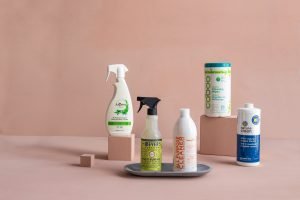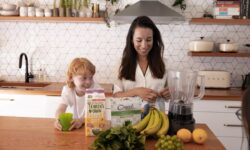Spring Cleaning Guide to Natural Cleaners
Confused about cleaning product labels? You’re not alone. Just in time for spring cleaning, this info from the Environmental Working Group will help you sort out what you should look for (and avoid) when shopping for Natural Cleaning products, to get your house sparkling clean this Spring!

Active ingredient
Usually, antimicrobial pesticides kill bacteria, viruses, or molds. They’re hazardous chemicals, and you rarely need them.
Corrosive/Caustic
Can cause serious chemical burns to the skin, eyes, or lungs. Avoid these products, and keep them far from children’s reach.
Fragrance
Often a chemical cocktail may consist of dozens of substances for which there is limited safety data. Choose products free of unnecessary, undisclosed ingredients.
Green Seal / EcoLogo
Provide independent, third-party certification of environmentally friendly cleaners. EWG recommends these third-party certified products—their standards are the best out there today.
Optical brighteners
Makes fabrics appear brighter. Can cause skin irritation.
Solvent
Keeps other ingredients mixed in a solution. Solvents can also be used as specialized cleaners for tough soils and stains. Water is a non-toxic solvent—many others are flammable.
Surfactant
Loosens dirt and grease from surfaces so that they can be washed away. Essential for cleaning, but some are safer than others. Some are toxic to aquatic life and decompose very slowly.
Volatile organic compounds (VOCs)
Often abbreviated “VOCs,” volatile organic compounds are air contaminants that form smog. Use no- or low-VOC cleaning
supplies whenever possible.
Make your own DIY Natural Cleaner with just two ingredients!
Widget not in any sidebars
















